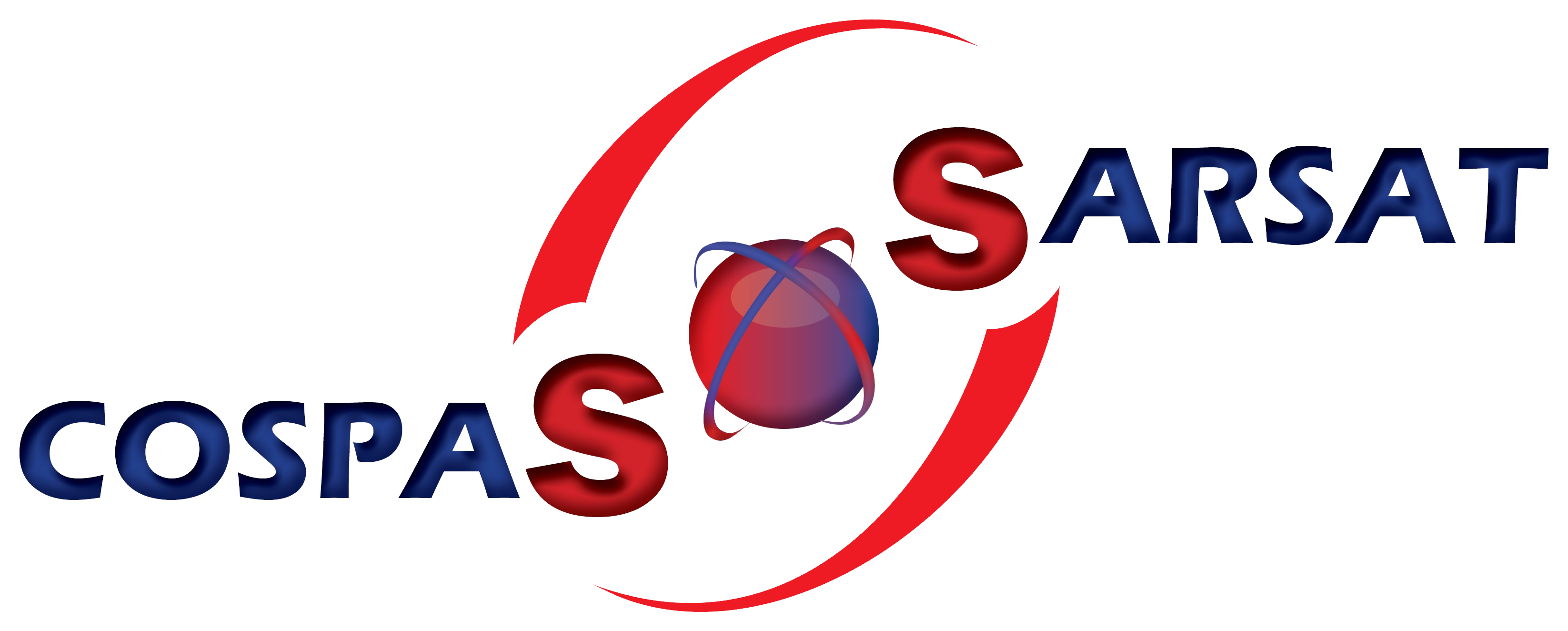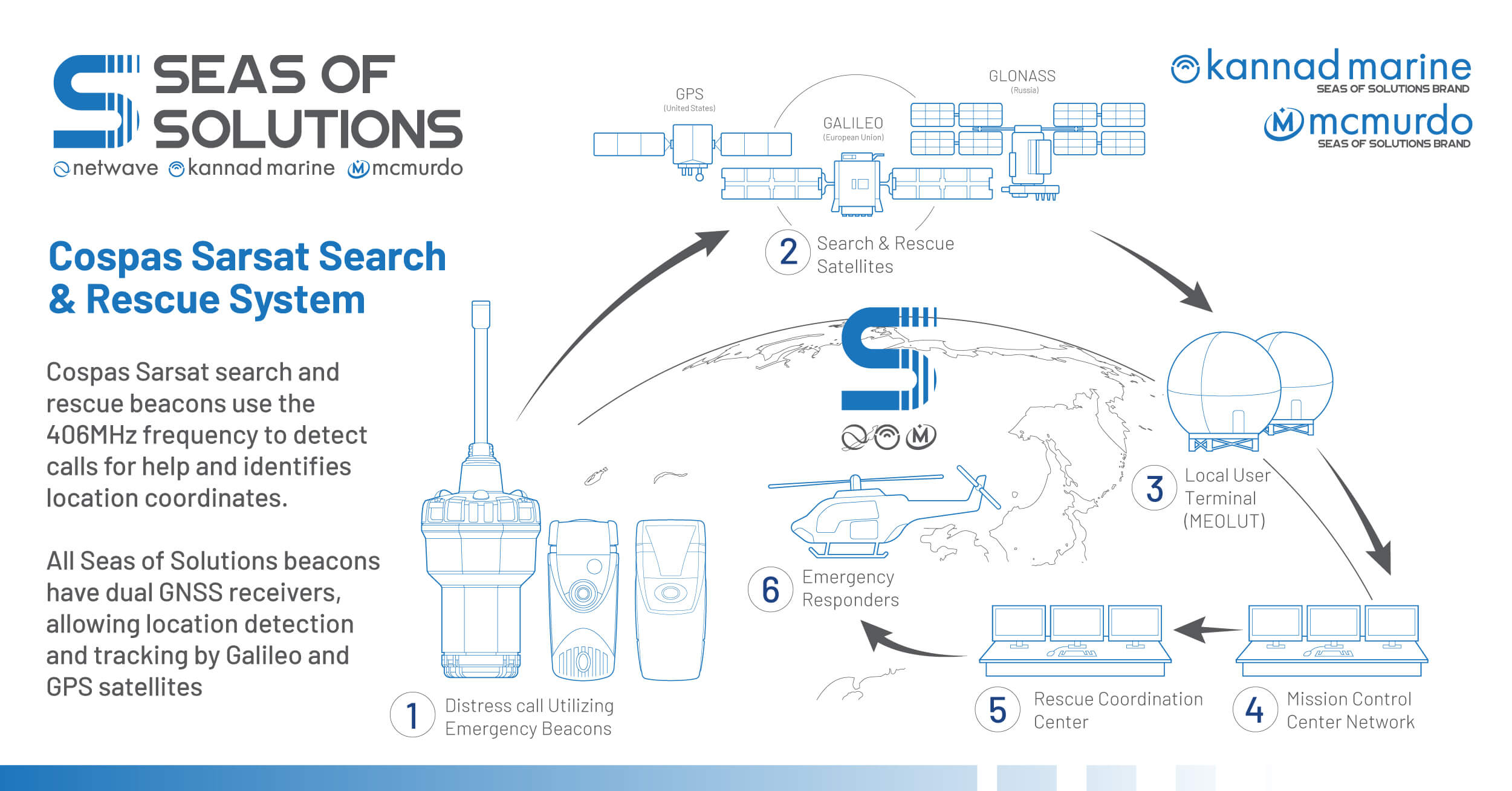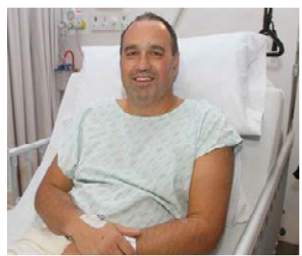MEOSAR is the upgrade of the existing Cospas Sarsat ecosystem of satellites and ground stations that detect the dedicated 406MHZ search and rescue frequency that has been running since 1982. The upgrade in a global investment in new ground antenna and a range of new MEO satellites to improve the speed, accuracy and reliability of this life saving system. When someone requires search and rescue (SAR) assistance, every minute counts. Medium-Earth Orbit (MEOSAR) satellites pick up the distress signals in near real time with more accuracy, versus the original Cospas Sarsat system that can take as long as two hours. Launching rescue operations sooner, with greater precision results in faster recoveries for individuals and government agencies and more lives saved.
MEOSAR
Technology Overview
Understanding MEOSAR


| 1 | The process begins with the activation of a distress beacon (EPIRBs for maritime use, PLBs for personal use and ELTs for aviation use) in an emergency situation, sending out a 406MHz signal. |
| 2 | The Cospas-Sarsat satellite system picks up the signal and transmits it back to a ground receiving station on earth — these are called Local User Terminals or LUTs. |
| 3 | The LUT processes the signal to generate a distress alert and relays it to a Mission Control Centre. |
| 4 | The Mission Control Centre receives the alert and relays this with location information to a Rescue Coordination Centre, often looking up the unique beacon ID number to gather information about the registered owner. |
| 5 | The Rescue Coordination Centre alerts the appropriate emergency response teams to deploy a rescue effort |
MEOSAR Improvements to Cospas Sarsat
- People in distress: Shorter wait time for help and confirmation that your distress alert has been received through Return Link Service
- SAR Teams: Less time searching and more time rescuing with the earliest-possible notice and highly accurate search area coordinates with the new dual GNSS capabilities of GPS & Galileo
- Government Agencies: More efficient mission planning and shorter overall time to rescue.
Over 56,000 lives saved…
The Cospas-Sarsat Programme has helped save over 56,000 lives since its launch in 1982. Aviation, marine and outdoor enthusiasts rely on 406 MHz emergency beacons to help with their detection and location in a distress situation around the world.
Seas of Solution is a global leader in emergency distress beacons, with the world’s first Galileo enabled beacons and the first PLB with return link service capabilities.
MEOSAR brings benefits to everyone involved in the ecosystem:
- Better Accuracy, Timeliness and Reliability
- Goal: Determine beacon location within 5km, 95% of the time, within 10 minutes.
- 72 MEOSAR satellites positioned at Medium Earth Orbit altitude
- Near instantaneous beacon signal detection using bent pipe technology — average under 45 minutes compared to older LEOSAR system
- Reduced response times with multiple signal burst’s to improve speed and accuracy of location calculation
- Close to 100% reliability due to multiple antenna systems and MEOLUT networking
- Return Link Signal (RLS) through Galileo satellites allows acknowledgement of signal receipt
Beacon Innovation Timeline
Case Study: First life saved through MEOSAR search and rescue network
The upgraded Cospas-Sarsat satellite system that found hiker 50 minutes faster
than the existing system. Don Stevens, a 53-year-old teacher from Wellington, New Zealand, was hiking over rugged terrain in the Tararua Range when he fell more than 90 feet, breaking his leg and leaving him unable to walk. After he activated his McMurdo FastFind 220 personal locator beacon (PLB), the distress signal was relayed by the MEOSAR satellite system to the Rescue Coordination Centre New Zealand in only four minutes — 50 minutes sooner than the existing system picked up the same distress signal.
Rescue Coordination Centre New Zealand Manager Mike Hill, said:
“The extra time created by receiving the signal faster was invaluable and potentially lifesaving. It meant we could get the search operation underway earlier, and that made all the difference with the limited daylight hours that are available at this time of year.”
